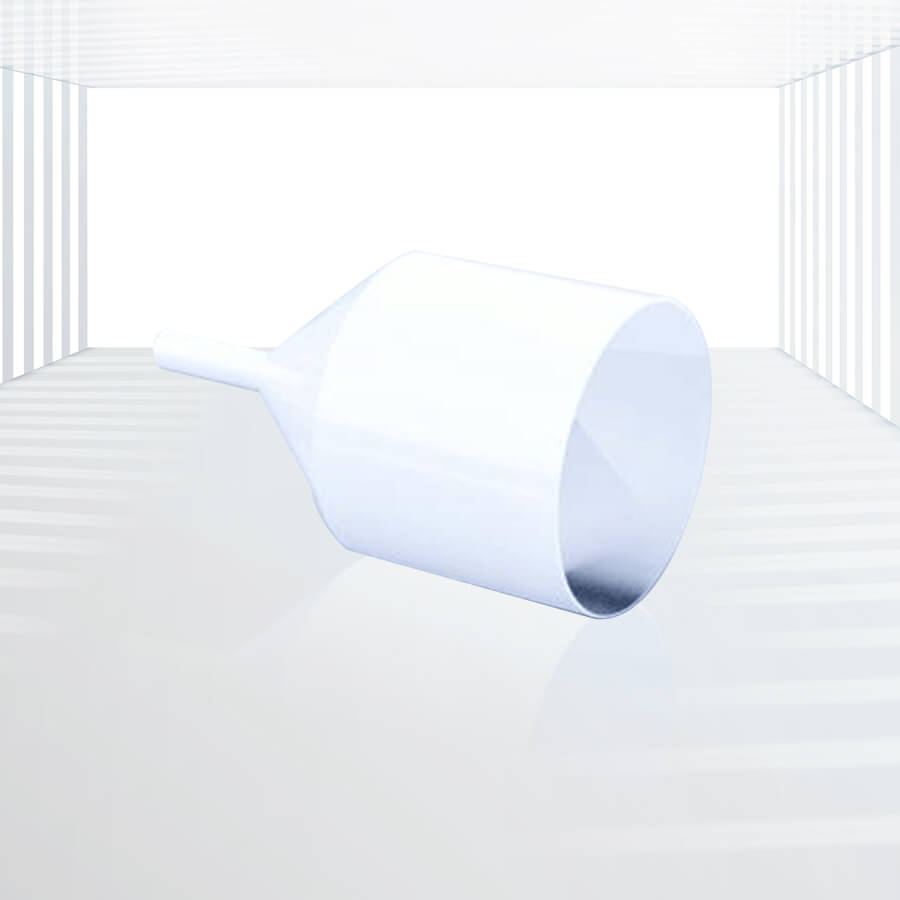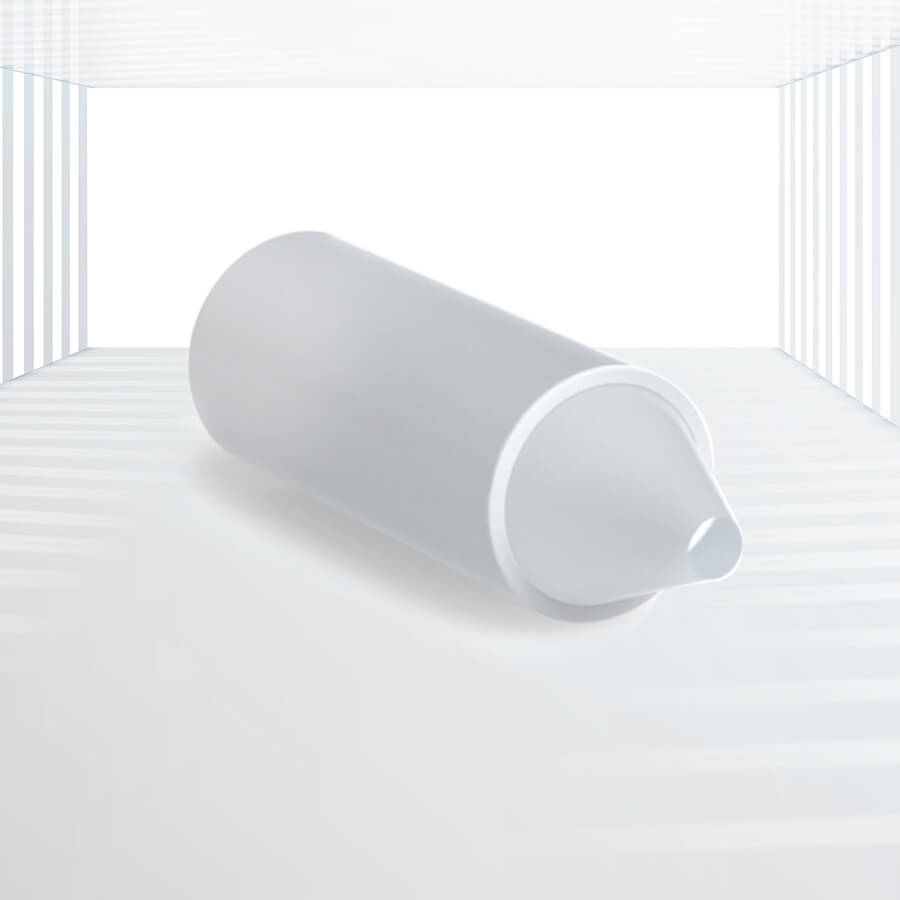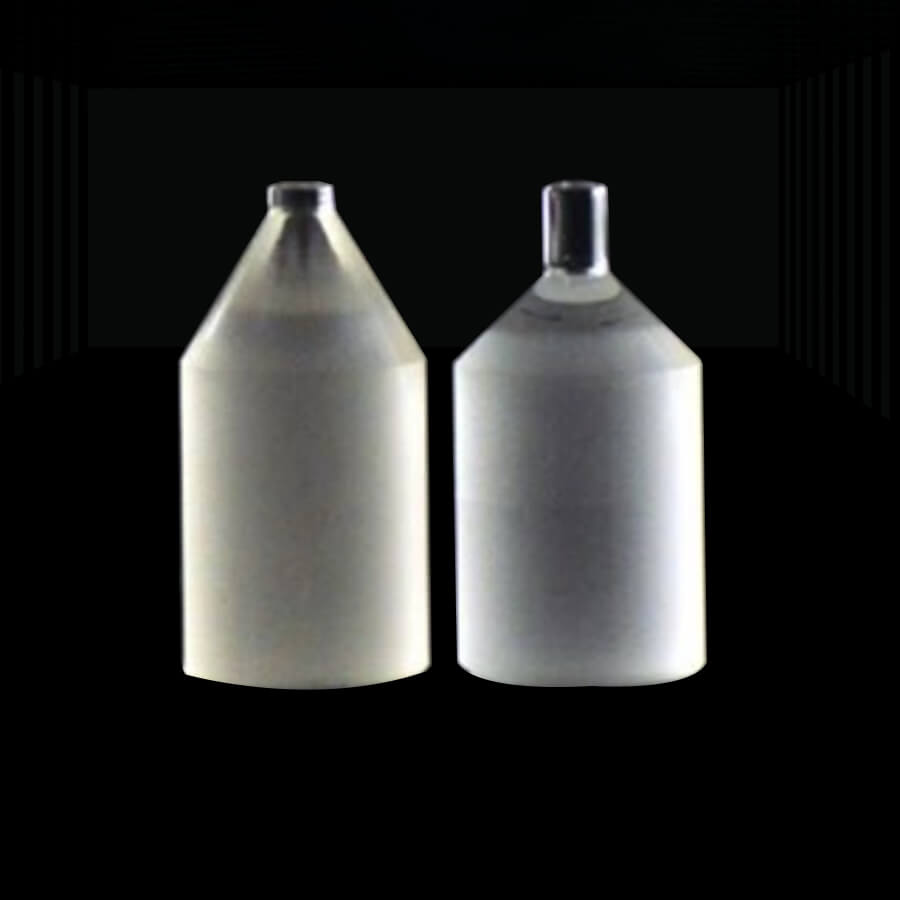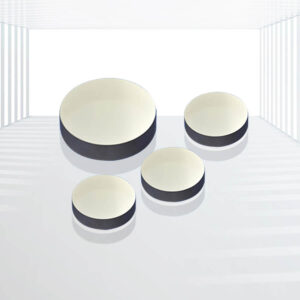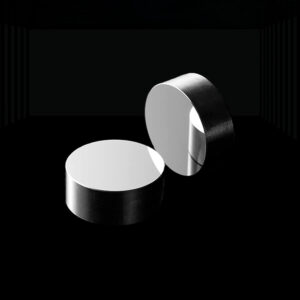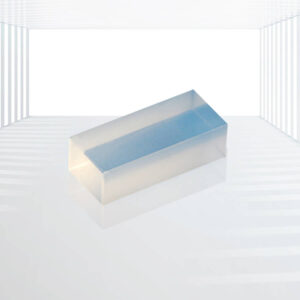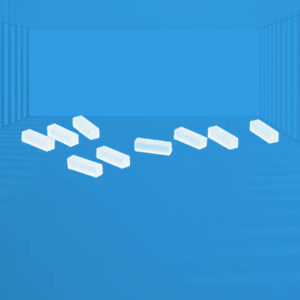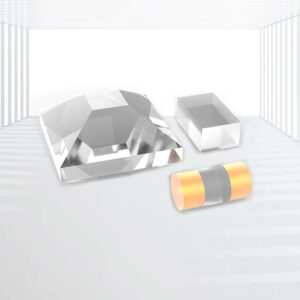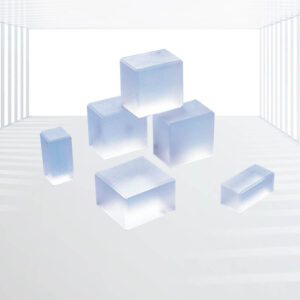Fiber End Caps
Extended cross-sectional area of the fiber end-face: By extending the cross-sectional area of the fiber end-face, the power density of the terminal is reduced, preventing fiber damage caused by intense heating and burning.
High Damage Threshold: With a high laser damage threshold, it is able to work for long periods of time without damage under high power conditions.
Beam Expansion: Reduces power density through beam expansion, allowing fiber optic components to operate within a tolerable range and avoid damage.
Uniform Beam Expansion in Homogeneous Media: The end caps are colorless and enable uniform beam expansion in homogeneous media.
High precision: It has high machining accuracy, which ensures a good combination of end cap and optical fiber.
Low Power Absorption: The design is reasonable, and the power absorption is extremely low, ensuring the reliability of long-term operation.
Versatile design: Customized shank or tapered drop-in segments with a special tilt angle at one end for easy splicing with optical fibers.
Applications: Fiber lasers, Fiber Amplifier, High-power optical system, Optical communication, Industrial processing, etc.
Fiber end caps are optical components designed to manage the end-face processing of fiber lasers and fiber amplifiers with high average power at the glass-to-air interface. The intense power at the fiber-air junction, due to the minor cross-sectional area of the fiber, can cause strong heating and scorching, potentially damaging the fiber optic. Fiber end caps mitigate this by extending the cross-sectional area at the fiber ends, enhancing the output power limit of fiber lasers, and reducing power densities at the terminals to prevent damage through beam expansion.
Specifications:
| Materials | Optical Glass (Custom) |
| Working Wavelength Range | Custom |
| Coating | Uncoated, 1064nm, or Custom |
| Clear Aperture | >80% |
| Surface Flatness(@633nm) | ≤λ/10 |
| Surface Quality | 10/5 S/D |
| Absorption | <1 ppm |
| Damage Threshold(CW) | >87kw/cm@1070nm |
| Surface Flatness | λ/4 |
| Damage Threshold(Pulsed) | >102J/cm^2@1064nm |
| Angle Tolerance | <0.1° |
| Numerical Aperture | 0.8 |
| Parallelism | <1 arc min |
Features:
- Extended cross-sectional area of the fiber end-face: By extending the cross-sectional area of the fiber end-face, the power density of the terminal is reduced, preventing fiber damage caused by intense heating and burning.
- High Damage Threshold: With a high laser damage threshold, it is able to work for long periods of time without damage under high power conditions.
- Beam Expansion: Reduces power density through beam expansion, allowing fiber optic components to operate within a tolerable range and avoid damage.
- Uniform Beam Expansion in Homogeneous Media: The end caps are colorless and enable uniform beam expansion in homogeneous media.
- High precision: It has high machining accuracy, which ensures a good combination of end cap and optical fiber.
- Low Power Absorption: The design is reasonable, and the power absorption is extremely low, ensuring the reliability of long-term operation.
- Versatile design: Customized shank or tapered drop-in segments with a special tilt angle at one end for easy splicing with optical fibers.
Applications:
- Fiber lasers: Used for end-face treatment of fiber lasers to increase output power limits and reduce power density.
- Fiber Amplifier: Used in fiber amplifiers to prevent fiber damage caused by heating and burning under high power conditions.
- High-power optical system: It is suitable for optical systems that need to handle high average power to ensure stable operation of the system at high power.
- Optical communication: In optical communication systems, it is used to protect the end face of optical fibers and extend the service life of equipment.
- Industrial processing: It is suitable for laser cutting, welding and other industrial processing fields to improve the power handling ability and reliability of the processing system.
Kingwin Optics offers fiber end caps made from quartz or fused silica, as well as various custom glass materials with custom AR coatings. These colorless end caps enable even beam expansion in homogeneous media, introduce slight beam distortion, and possess a high damage threshold. They can feature either a stem or a tapered lead-in section with a special inclined angle at one terminal to facilitate splicing into the fiber.
Kingwin Optics’ fiber end caps are known for minimized power absorption, high precision, and excellent laser-induced damage thresholds. These features make them attractive alternatives for clients seeking competitively priced products with reliable long-term performance.

